Type of Pest:
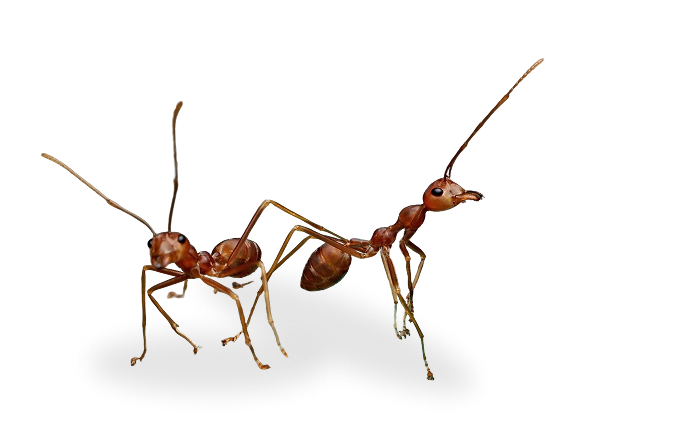
Different ant species require specific solutions. Here are some of the common types of ants we often find in our surroundings.
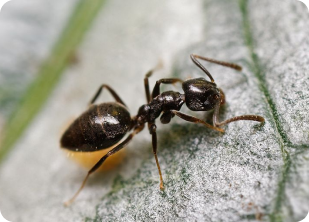
House ants are small ants commonly found indoors, often attracted to sweets and greasy foods but generally not harmful to structures.
Size, Color: About 1⁄16–1⁄8 inch long; brown to black depending on species.
Identifying Characteristics: Tiny, fast-moving ants that form scent trails to food.
Where does it nest/hide? Inside walls, under floors, and near moisture sources.
When does it typically reproduce? Spring and summer; colonies can split and spread quickly.
What is it attracted to? Sugary foods, crumbs, and greasy residues.
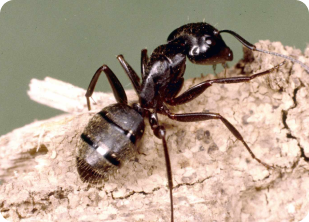
Carpenter ants are large black or reddish ants that tunnel through wood to build nests, potentially causing structural damage.
Size, Color: ¼–½ inch long; black, red, or a mix of both.
Identifying Characteristics: Large body, bent antennae, and smooth, rounded thorax.
Where does it nest/hide? Damp or decayed wood, wall voids, and around windows or roofs.
When does it typically reproduce? Spring and summer; winged swarmers appear during warm months.
What is it attracted to? Moist wood and sweet or protein-based foods.
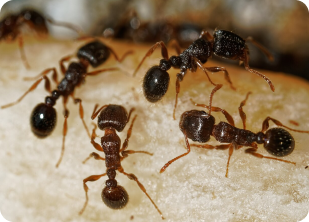
Pavement ants are small brown to black ants that typically nest in cracks of sidewalks, driveways, and building foundations, often entering homes in search of food.
Size, Color: About 1⁄8 inch long; brown to black with lighter legs and antennae.
Identifying Characteristics: Parallel lines on head and thorax; slow-moving with visible trails.
Where does it nest/hide? Sidewalk cracks, driveways, foundations, and baseboards.
When does it typically reproduce? Late spring to summer; swarmers emerge on warm days.
What is it attracted to? Sweets, grease, and protein-rich foods.
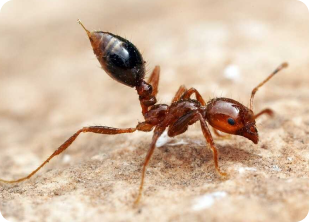
Fire ants are reddish-brown ants known for their painful stings, aggressive behavior, and large mound nests, often found in lawns and open areas.
Size, Color: 1⁄8–¼ inch long; reddish-brown with darker abdomen.
Identifying Characteristics: Workers of varying sizes, fast movement, and fierce stinging behavior.
Where does it nest/hide? Lawns, open fields, gardens, and near foundations.
When does it typically reproduce? Spring through fall; queens produce large colonies quickly.
What is it attracted to? Protein, sugars, and disturbed soil for nesting.
Our ant control service is designed to stop infestations at the source and keep them from coming back. By combining careful inspection, targeted treatments, and follow-up support, we ensure your home or business remains protected against ants and their potential risks.
We thoroughly check your property to identify the ant species, locate nesting areas, and determine the extent of the infestation.
Using safe and effective methods, we target ants at their source, ensuring long-lasting results without harming your environment.
After treatment, we monitor progress, provide preventive advice, and make adjustments if needed to keep your space ant-free.
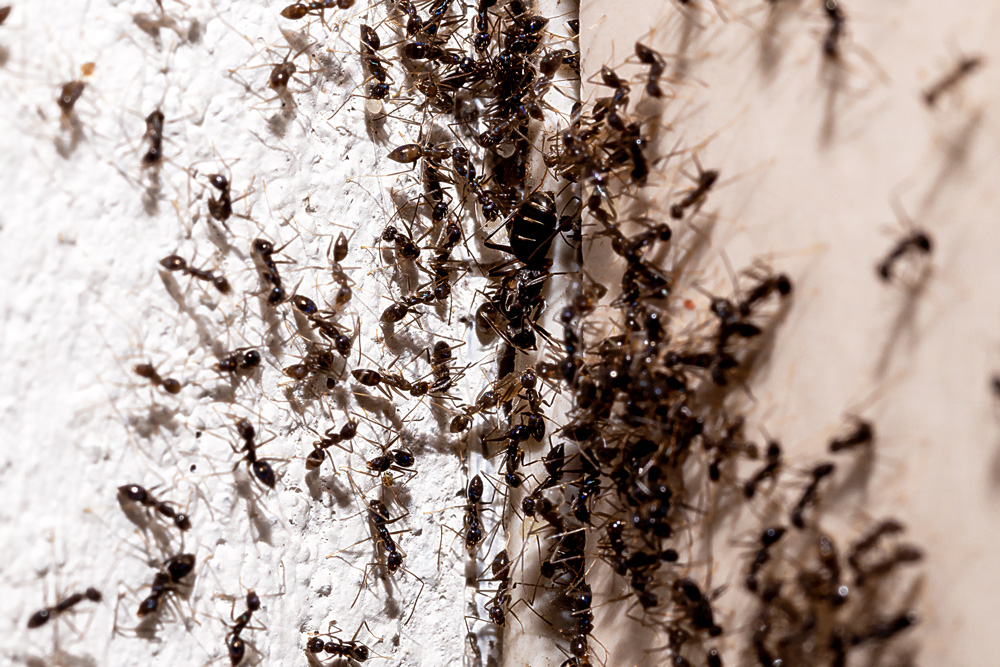
Ants become active after winter, searching for food and water to rebuild their colonies.
Ant trails inside homes as they forage for sugary and protein-rich foods.
Early colony formation in gardens and lawns, which can lead to infestations later


Ants move indoors seeking warmth and shelter as temperatures drop.
Indoor infestations in kitchens, bathrooms, and near foundations.
Contamination of stored food as ants search for supplies before winter.

Our comprehensive pest inspection and prevention program focuses on early detection and elimination of conditions that attract unwanted pests. Through ongoing monitoring and tailored maintenance, we help ensure a safe, pest-free environment for your facilities year-round.
A proactive rodent management program reduces costly damage, contamination, and emergency callouts often associated with reactive treatments. By addressing potential issues early, LONESTAR Pest Solutions helps protect both your facilities and your budget through consistent, preventive care.
Our hassle-free scheduling and routine visits allow your team to stay focused on daily operations while we handle pest prevention behind the scenes. With reliable service you can count on, LONESTAR Pest Solutions ensures your facilities remain protected—without interruption or added effort on your part.
From effective elimination to long-term prevention, we provide more than just products — we provide peace of mind. Our professional-grade solutions are designed to target pests quickly and efficiently, while our certified experts are here to guide you every step of the way. With personalized guidance and the assurance of high-quality standards, you’ll have the confidence to take back control of your environment.
Great customer service with Team Theresa at the front desk & Cameron, my technician. They are a joy to work with. Theresa consistently like clock work schedules my appointments quarterly & timely. Cameron has done an incredible job going above & beyond maintaining my grandson’s sandbox outside – ant free! It is a such a relief. Never mind his meticulously attention to detail inside my home is much appreciated. Both Theresa & Cameron are a valuable asset to Lone Star Pest. Call them!
— Susie Gold
Lonestar does our quarterly pest control and we had to call for re-spray of our kitchen due to these 100 plus degree temperature days. They sent Eddie over right away and he was so helpful telling me to pick up dog food every day, plug drains daily, use vinegar solution for drains, and make sure they always spray an area of the custom cabinets that has a gap between the cabinets and wall. He was the best! Really educated me and was so patient and even funny as I stared wide eyed over his knowledge of all things cockroaches.
— Carolyn Wafford
Have used Lonestar for years for normal treatments inside and outside, but just recently used them for mosquito control prior to an outdoor graduation pool party. EXCELLENT RESULTS AND PHENOMENAL SERVICE! We had them do a general area fogging and then leave-behind portable remote controlled area “mister” — we haven’t seen a mosquito in two weeks!
— John Seamon
We have used Richard’s team for years. Recently we learned our neighbor’s had termites. We contacted Lone Star to learn about our options. The solution provided was better than solutions our neighbors suggested. In fact, we learned of several pitfalls that our neighbors might encounter (beyond higher cost over the long term).
— Timothy Smith